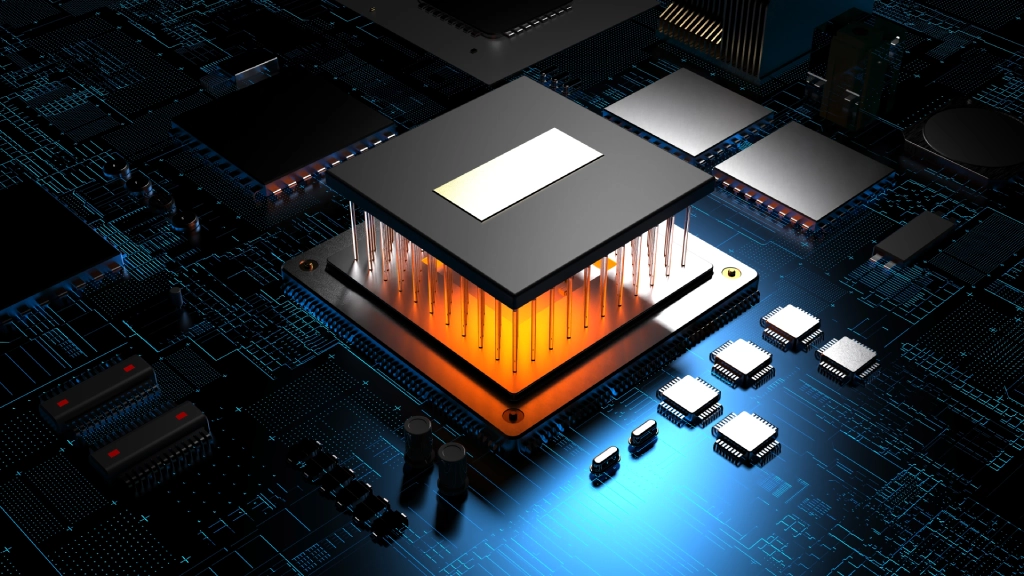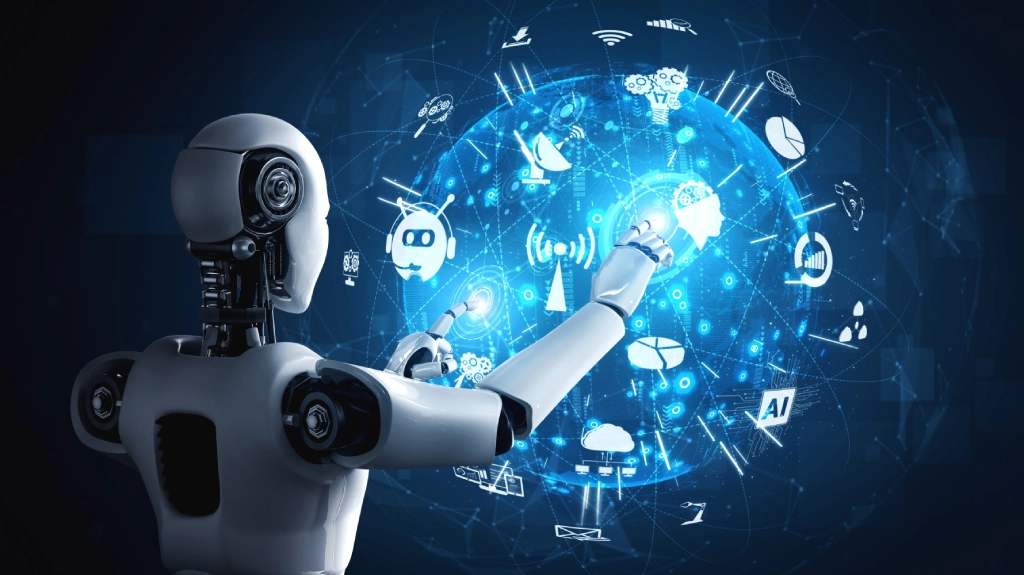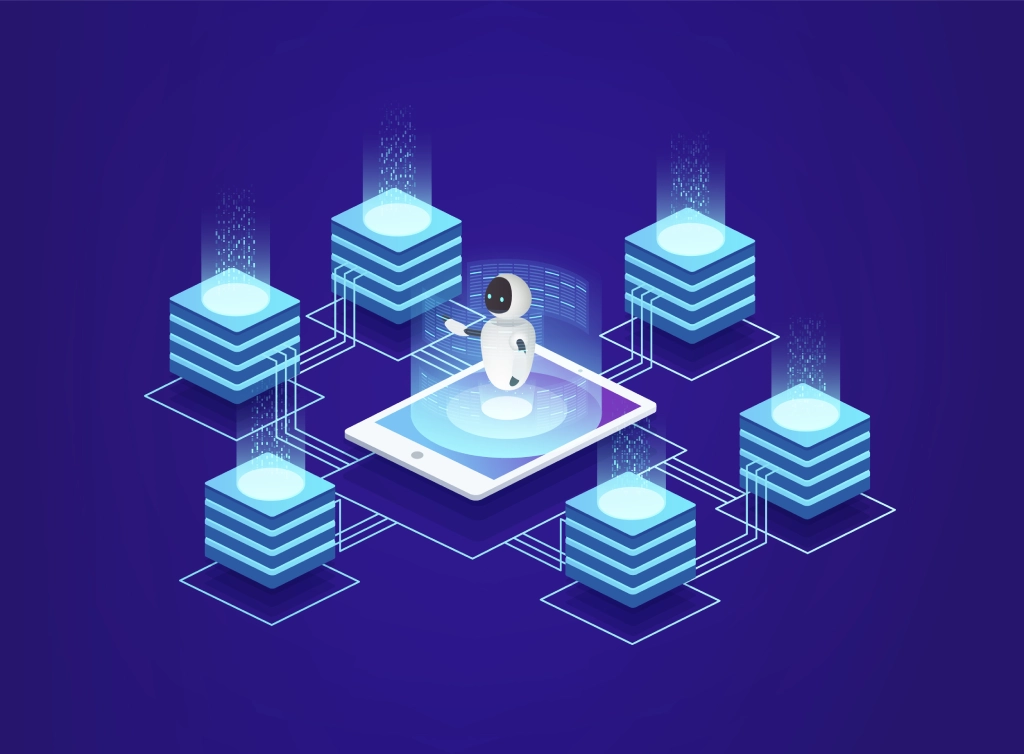Table of Contents
ToggleAs AI and digital transformation continue accelerating, our dependence on everyday smart devices grows rapidly. Behind the scenes, embedded software serves as the invisible force driving the functionality of these technologies.
From smartphones and smartwatches to smart thermostats and medical equipment, embedded systems software ensures these devices operate efficiently, accurately, and reliably.
In this article, we will explore the definition of embedded software, examine the differences between embedded software, firmware, and application software, walk through the embedded software development process, showcase real-life embedded software examples, and uncover the future trends in embedded software shaping our connected world.
What is Embedded Software?
Understanding Embedded software in simple terms means it is a type of computer program that is designed to do dedicated functions within a larger mechanical or electrical system.
Embedded software is different from general-purpose software because it runs on specialized hardware and is tightly coupled with it.
To understand the exact definition of embedded software can be summed up as follows:
“Embedded software is software written to control machines or devices that are not typically thought of as computers.”
Embedded systems software are known as real-time embedded systems, which means they must respond to inputs within a specific time frame. This aspect is critical in applications like automotive safety systems, medical devices, and industrial machines.

Embedded Software vs Firmware
When designing or working with the embedded system it is important to understand the difference between embedded software and embedded firmware. While both are integral to device functionality, they operate at different levels and serve unique purposes.
Think of them as two layers—firmware being the foundational layer closer to the hardware, and embedded software managing the logic and higher-level tasks. Both embedded software and embedded firmware are essential in making devices smart, responsive, and functional.
The detailed comparison table below will help you better understand the key differences between Embedded Software vs Firmware:
| Feature | Embedded Software | Embedded Firmware |
|---|---|---|
| Purpose | Controls high-level operations and logic | Manages low-level hardware functionalities |
| Storage Location | Typically stored in flash memory or external storage | Usually stored in ROM, EEPROM, or onboard flash |
| Update Capability | Easier to update via software patches or OTA updates | Harder to update; may require specialized tools |
| Complexity | More feature-rich and application-oriented | Simpler and focused on hardware control |
| Interaction Level | Interfaces with hardware, middleware, and applications | Interfaces primarily with hardware components |
| Examples | OS-level logic in smart TVs, camera apps in phones | BIOS in computers, motor control in washing machines |
Embedded Software Development Process
There are many stages involved in the embedded software development process to ensure that the system performs optimally within the constraints of the hardware it runs on.
Every step as mentioned below is important in building reliable, efficient, and real-time embedded software applications.
1. Requirements Analysis
In this first step of requirement analysis, you need to define what the system is expected to do by gathering technical and functional requirements from stakeholders.
This also includes assessing hardware limitations, power consumption, memory usage, and identifying real-time performance needs.
2. System Design
This stage creates the architectural layout that outlines how software components will interact with the hardware.
This includes selecting the operating system (if needed), middleware, and communication protocols, and planning hardware-software integration to ensure smooth execution.
3. Embedded Programming
This phase uses languages like C, C++, or Assembly to write efficient, optimized code that is best suited for embedded programming.
Developers must account for low-level hardware control, memory usage, and responsiveness, especially in real-time embedded systems.
4. Testing & Debugging
In this stage of the embedded software development process, you need to conduct complete validation using both simulators and actual hardware to ensure the software performs as expected under all conditions.
It may involve stress testing, error handling, and debugging tools that detect memory leaks or timing issues.
5. Deployment & Maintenance
Lastly. once testing and debugging are done, the software is deployed onto the target device using suitable flashing tools or OTA (over-the-air) methods.
Post-deployment, the system is monitored for bugs, and embedded software updates are applied to improve performance or address security vulnerabilities.

Embedded Software vs Application Software
Embedded software and application software are types of software that differ significantly in their design approach, functionality, and areas of application.
Embedded systems software is designed to operate specific hardware with limited resources, whereas application software is built to run on general-purpose computers and interact directly with users.
Below is a comparative table:
| Feature | Embedded Software | Application Software |
|---|---|---|
| Purpose | Controls device-specific functions | Performs user-oriented tasks |
| Dependency | Tied to specific hardware | Runs on general-purpose systems |
| Real-time Response | Often required (real-time) | Rarely required |
| User Interface | Minimal or none | Feature-rich interfaces |
| Update Frequency | Infrequent | Frequently updated |
This analysis of embedded software vs application software helps clarify why embedded systems software is better suited for hardware-bound systems.
Examples of Embedded Software in Daily Life
Embedded software is everywhere around us, silently powering the devices and systems we rely on daily. The real-time embedded systems ensure functionality, responsiveness, and accuracy.
Below are key industries and examples of embedded software in daily life as follows:
1. Consumer Electronics
Devices like smartphones, smart TVs, gaming consoles, digital cameras, and home assistants (e.g., Alexa, Google Home) run on embedded systems software. These systems manage real-time operations like display control, device interactivity, and multimedia processing.
Without embedded software, these electronic devices would lack the intelligence and automation we take for granted.
For example: Smart TVs use embedded firmware to control display panels, manage Wi-Fi or Bluetooth connectivity, handle remote inputs, and run streaming mobile apps like Netflix or YouTube smoothly.
2. Internet of Things (IoT)
In the IoT space, embedded software is the brain behind smart devices that collect, process, and share data across networks. It enables devices to operate autonomously, react to environmental changes, and sync with cloud services for broader functionality.
For example: Smart home devices like thermostats, smart plugs, and voice-activated assistants rely on real-time embedded software applications for intelligent automation, energy efficiency, and easy remote control through mobile apps.
3. Medical Devices
Embedded programming plays a life-saving role in modern healthcare equipment. These medical devices require highly reliable and precise performance to monitor, analyze, and treat patients in real-time, often with little to no human intervention.
For example: Pacemakers, infusion pumps, ECG monitors, and insulin pumps use embedded software to regulate body functions, collect vital data, and ensure patient safety—sometimes even alerting doctors in emergencies.
4. Automotive Industry
Modern vehicles are increasingly software-driven, with multiple embedded systems software modules managing everything from safety to entertainment. Cars often have more lines of code than commercial aircraft, emphasizing the growing role of embedded software development.
For example: Airbags, anti-lock braking systems (ABS), electronic stability control, and engine management systems all rely on embedded software to function correctly and respond in real time to driving conditions.
5. Telecommunications
From maintaining signal quality to handling data routing, the telecom industry runs on embedded software engineering. High-speed communication and uninterrupted network availability wouldn’t be possible without these systems working efficiently behind the scenes.
For example: Routers, modems, and mobile towers use embedded firmware to manage signal decoding, network switching, user authentication, and performance diagnostics—ensuring you stay connected 24/7.
6. Robotics
Real-time embedded systems are essential in robotics for controlling mechanical components, interpreting sensor input, and making quick decisions. Embedded software allows robots to carry out repetitive or complex tasks with precision and adaptability.
For example: Industrial robotic arms in manufacturing use embedded software to process sensor data, calculate real-time movement paths, maintain torque control, and perform operations like welding, painting, or assembly with extreme accuracy.

7. Security and Surveillance Systems
Security systems depend heavily on embedded software for detecting, monitoring, and responding to threats in real time. These systems are often integrated with cloud-based alerts, face recognition, and motion detection algorithms.
For example: CCTV cameras, motion sensors, smart locks, and biometric access control systems are powered by embedded software examples that enable them to record footage, identify activity, and send instant alerts to security personnel or homeowners.
Embedded Software Programming Languages
Choosing the right language is important in embedded software development.
Below is the table of commonly used embedded software programming languages and their typical applications:
| Language | Usage |
|---|---|
| C | Most widely used; ideal for low-level programming |
| C++ | Used for object-oriented real-time applications |
| Assembly | Offers maximum control over hardware |
| Python | Used in prototyping and scripting on embedded Linux |
| Rust | Gaining popularity for safety-critical systems |
| Ada | Preferred in aerospace and defense applications |
All these languages power the embedded firmware, operating systems, and real-time embedded software applications used across industries.
Future Trends in Embedded Software
The future trends in embedded software are reshaping how we interact with smart devices, machines, and connected environments.
As technology evolves, embedded software development is playing a central role in enabling faster, smarter, and more secure solutions.
Let’s explore some of the most future trends in embedded software:
1. Role of Embedded Software in IoT
As the Internet of Things (IoT) continues to expand, the role of embedded software in IoT global trends is becoming more critical than ever. It empowers edge devices to gather, process, and communicate data in real time, enabling easy automation and interoperability.
These systems support smart homes, industrial automation, and connected healthcare, proving how essential embedded software is in enabling data-driven ecosystems.
2. AI and Machine Learning Integration
The integration of AI and machine learning into embedded systems is revolutionizing how devices interpret data and make decisions. Embedded software now enables intelligent behaviors such as voice recognition, image processing, and predictive maintenance.
By performing these tasks locally on the device, systems gain autonomy and speed, which is important in real-time embedded software applications where latency can be a dealbreaker.
(Also Read: What is the goal of Artificial Intelligence?)
3. Edge Computing
Edge computing minimizes the need for constant cloud communication by processing data close to the source—on the device itself. This reduces latency, saves bandwidth, and improves system responsiveness.
As a result, how embedded software works is evolving to handle more complex processing tasks directly within the hardware, supporting applications like autonomous vehicles, drones, and industrial robots.

4. Security Enhancements
With the increasing use of embedded software in critical infrastructure, security has become a top concern. Vulnerabilities in embedded firmware or real-time embedded systems can lead to severe consequences.
Modern embedded software development practices incorporate advanced encryption, secure boot mechanisms, and intrusion detection to guard against cyberattacks and unauthorized access.
5. Open Source Frameworks
The rise of open-source platforms like Zephyr, FreeRTOS, and RIOT OS is accelerating innovation in embedded software engineering. These frameworks reduce website development time, provide reliable community support, and offer extensive hardware compatibility.
They also encourage collaboration and transparency, making it easier for teams to build, test, and deploy scalable and secure embedded systems software across industries.
All these future trends in embedded software indicate a shift toward smarter, safer, and more autonomous devices.
Final Thoughts
In today’s fast-evolving tech landscape, understanding what is embedded software is important. From wearables to industrial machines, embedded systems software powers the intelligent devices we depend on in everyday life.
As future trends like IoT, AI, and edge computing accelerate, the role of embedded software engineering will continue to grow and help you drive innovation, automation, and smarter experiences.
At Alphaklick Solutions, we offer end-to-end embedded software development services using cutting-edge technologies. From concept to deployment, and ongoing post-launch support and maintenance, we ensure your systems run smoothly, securely, and efficiently.
If you need help to build or optimize your embedded solution? Then you can contact us today and let’s bring your idea to life.




















